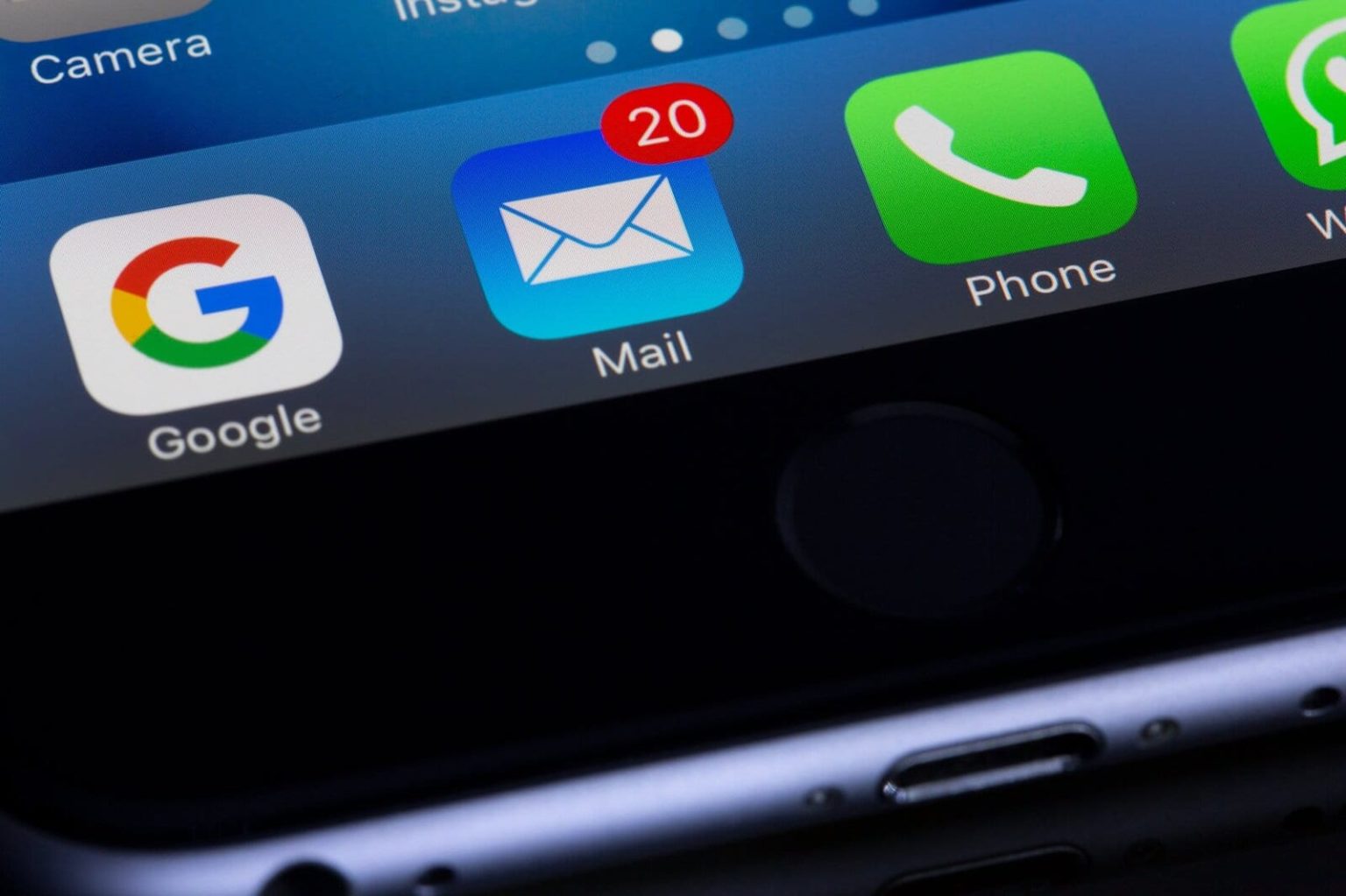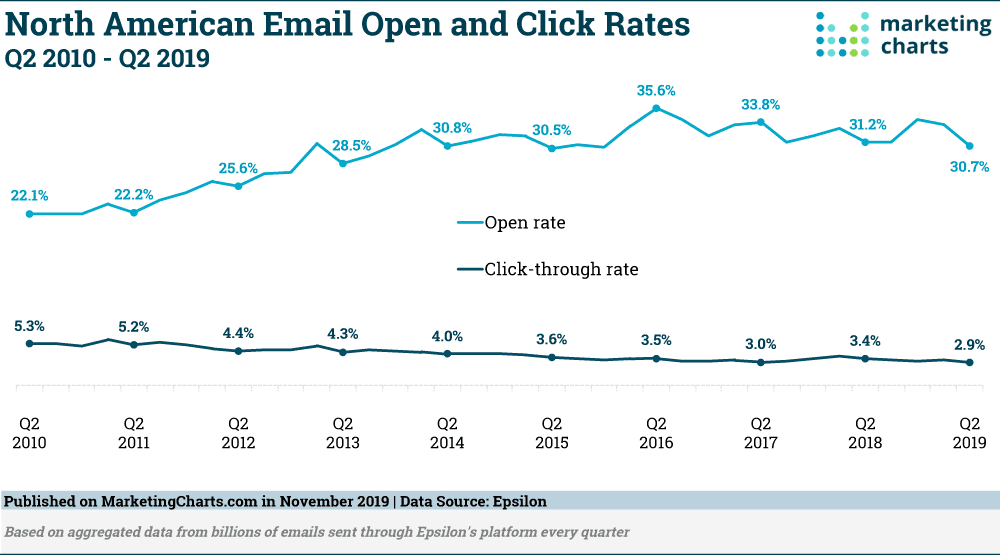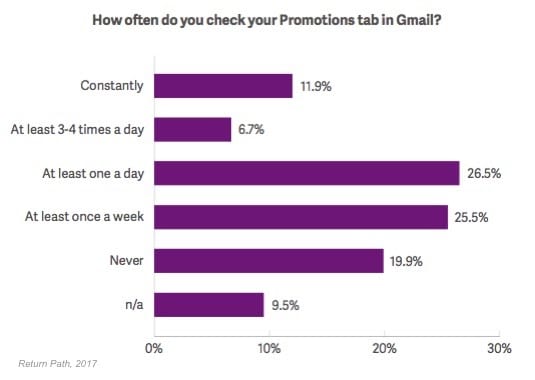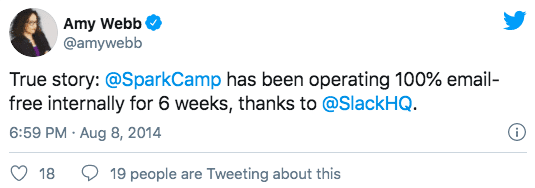Is email marketing dead? The no BS answer
Email marketing is far from dead, but brands are finding it harder to stand out. Here’s what the data says about emails changing value.

Email marketing is far from dead, but brands are finding it harder to stand out. Here’s what the data says about emails changing value.

Asking, “Is email marketing dead?” tends to elicit this kind of response.

That’s because it’s a marketing channel renowned for its ability to generate ROI. So before we go any further, no, email marketing isn’t dead.
However, just because something isn’t dead doesn’t mean it’s flourishing. In other words, email marketing isn’t what it used to be.
For one, the average person now receives 121 emails per day.
That means that vital statistics like email click-through rates continue to decline. Here’s a graph that captures the long-term trend. That’s nearly a 45% decrease since 2010.

Say you have a 30% open rate and a 3% click-through rate on those opens. If you send an email to 1,000 subscribers, that means about 300 will open, and nine people will click through.
If your website’s conversion rate is 15%, way above the average of 2.35%, one person will buy something.
These aren’t the kind of numbers that instill confidence.
If you say your email performance isn’t outstanding, most people’s first response is to tell you that your strategy probably needs some work.
This response tends to shift the blame back onto the individual rather than broader communication trends.
It’s true that if you’re not happy with your email’s performance, there are tweaks you can make to see better results. But there’s also no denying that email’s changed too.
Here’s why.
What did Google do to hurt email marketing? Tabbed browsing. It first introduced an automatic filtering system back in 2013. Its current iteration looks like this.

Microsoft followed soon after with a pared-back version for Hotmail users.

The promotions tab is where emails from an e-commerce website or anything with a promotional call-to-action are filtered.
While all of this doesn’t prevent the user from reading your emails about sales and special deals, it certainly makes it far less likely they will. About 45.4% of people check the promotions tab in Gmail once a week or never.

Email was once at the forefront of convenience. But chat apps, SMS, and social messaging platforms have taken over.
In 2016, instant messaging and texting (e.g., SMS and chat apps) were the first things 35% of US consumers checked in the morning, according to Deloitte, up from 29% in 2014. Meanwhile, 22% of US consumers checked their email first, down from 29% in 2014.
On the work front, apps like Slack and Microsoft Teams have drastically reduced the amount of time we spend on work emails.

Ten years ago, around 60% of email was from another person, and now it’s closer to 8%.
While the share of all email traffic that is spam has dropped since 2014, it’s still close to 45%.
That means that people could receive as many as 45 spam emails a day. Compare this to SMS, where the average person receives eight spam texts a month.
As an article in Marketing Land put it, “Give businesses 40+ years to exploit a marketing channel as powerful as email, and the competition for a user’s attention becomes almost overwhelmingly fierce.”
It’s why 75% of people think email marketing is annoying. As we mentioned before, the average office worker receives 121 emails. Imagine receiving 121 letters and trying to sort through all of them.
Nearly every brand these days sends email marketing campaigns ranging from email newsletters to triggered marketing automation. All of these emails add up and make it harder for your brand to stand out.
Email performance is declining because of:
Does that mean you should never send another email or hire the most expensive email marketing agency you can find? Of course not.
It means that you need to do two things: incorporate alternatives to email marketing into your strategy and retire some outdated email practices.
To improve your email ROI, here’s what your email marketing strategy should avoid:
That’s the 1,000-foot view of what you want to avoid. If you want a little more detail on the dos and don’ts of modern email marketing, check out this article from Social Media Today.
There’s a temptation for digital marketers to declare one channel better than the other based on their personal experience.
If you’re in B2B marketing, you might say the low engagement rate on social media platforms like Instagram makes it a less effective channel. If you sell swimwear, you’ll probably think otherwise.
The reality is that modern marketing isn’t a zero-sum game. You don’t need to pick one channel over another. It’s about figuring out how to communicate with your audience across the platforms they use.
However, with different messaging channels overtaking email for personal and professional use, it’s time for your brand to look at SMS, Facebook Messenger, and WhatsApp.
And no, introducing a channel like SMS won’t hinder your email marketing. The reality is that you’re giving your subscribers a choice as to what channel they want to hear from you on. And that tends to go down well.
Other communication methods gaining popularity doesn’t mean email is dead. Nor does declining performance. There’s a lot more nuance to the answer than a simple “dead or not.”
Email’s ability to drive real business results over the last thirty years means that it’d be foolish to quit on it now. However, there’s no denying that it isn’t the same channel it used to be.
Drew Wilkinson is the Head of Marketing at SimpleTexting. Drew has more than a decade of experience managing successful integrated marketing programs to build brands, raise awareness, and generate demand.
More Posts from Drew WilkinsonOur HubSpot SMS integration saves you time, boosts productivity and strengthens customer relationships. Find out how and why to integrate HubSpot with SimpleTexting
ReadThe Office is able to deliver laughs and memorable characters all through witty dialogue, so we did a deep dive into each character's dialogue. Check it out!
ReadStart a text marketing campaign or have a 1-on-1 conversation today. It's risk free. Sign up for a free 14-day trial today to see SimpleTexting in action.
No credit card required